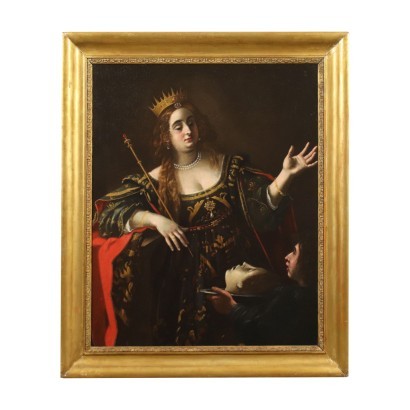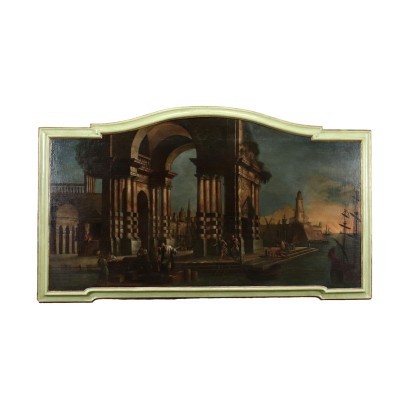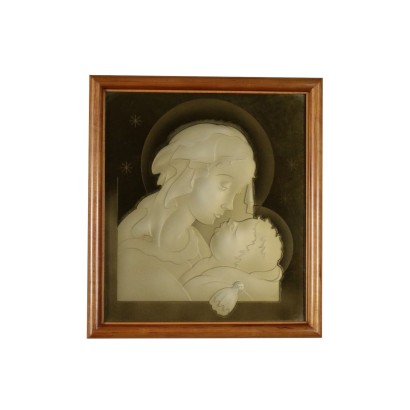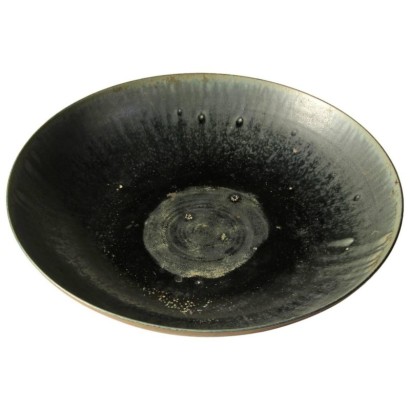Giovanni Baglione, attributed to - Herodias receives the head of the Baptist
Features
Herodias receives the head of the Baptist
Artist: Giovanni Baglione (1566-1643) Attributed to
Artwork title: Erodiade riceve la testa del Battista
Age: 17th Century / 1601 - 1700
Subject: Biblical scene
Artistic technique: Painting
Technical specification: Oil on Canvas
Description : Erodiade riceve la testa del Battista
Oil painting on canvas. Inspired by the Gospel accounts of the life of John the Baptist, the scene depicts Queen Herodias receiving the preacher's head on a plate, which her daughter Salomé had requested from Herod in exchange for her dance. Herodias is depicted here in all her royalty, with the crown and the scepter, dressed in clothes and jewels, but with an aloof and indifferent expression, almost bored, even in front of the macabre spectacle, while making the gesture of disdainfully pushing away the trophy that a servant is handing her on a platter. The work, already auctioned by Dorotheum in 2008, was published and well described in the text "Art history studies in honor of Fabrizio Lemme", published in 2017, in the chapter by Michele Nicolaci (historian of expert art of seventeenth-century painting), which presents it as an unpublished painting by Giovanni Baglione. He was a Roman artist and writer, known above all for having written "The lives of painters, sculptors and architects from the pontificate of Gregory XIII of 1572 up to the time of Pope Urban Eighth" in 1642, the first published collection of artist biographies in 17th century Rome. His writing "The nine churches of Rome", published in 1639, is also of considerable importance. His pictorial activity took place between Rome and Naples; initially of a late mannerist style, when he met Caravaggio, he adapted to his style almost reaching imitation, so much so as to arouse the indignation of Merisi and his derision, as well as the scarce consideration of his Roman colleagues; isolated and insulted, Baglione then returned to his own personal style, but he was nevertheless able to achieve good success in Roman high society, thanks also to his ability to gain favor with the powerful and reinvent himself as a man of letters in the Barberini court. His stylistic turning point with the return to a mannerist approach took place around 1630 and was defined in a production characterized by compositional forcing and almost caricatured characters. This Herodias can also be placed in this period: although in the redundant and excessive, almost ironic way of portraying the character, this work does not lack elegance, in the theatrical pose of the woman, but also of the servant, in the skilful game of contrasts. chromatic (in the dress of the queen, but also in the differences between the incarnates), in the overabundance of clothes and jewels. The canvas has been restored and relined. It is presented in a gilded frame from the late 19th century. Publication attached to the painting.
Product Condition:
Product in good condition, with small signs of wear.
Frame Size (cm):
Height: 138
Width: 114
Depth: 7
Artwork dimensions (cm):
Height: 115
Width: 92

































